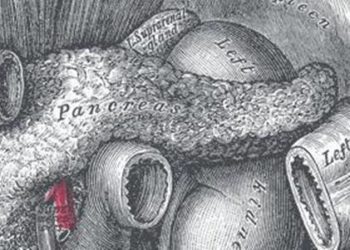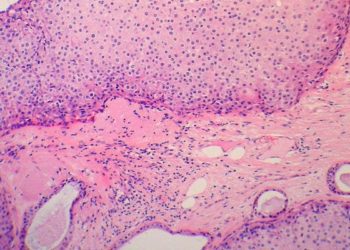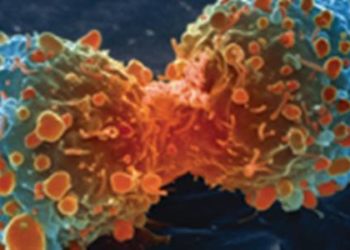Totally implanted ports show reduced complication rates compared to other central venous access devices
1. Overall complication rate for PORTs (29-32%) was lower than that for PICCs (47%) and Hickman (43%) for patients receiving systemic anticancer therapy.
2. Rates of device removal due to complications, mechanical failure, and venous thrombosis were also lower in patients with PORTs than PICCs.
Evidence Rating Level: 1 (Excellent)
Study Rundown: Systemic anticancer therapy (SACT) is commonly administered using a cannula, a short catheter, or central venous access devices (CVADs), such as Hickman catheters, peripherally inserted central catheters (PICCs), and totally implanted ports (PORTs). Although different types of CVADs are used for different situations, the risks and benefits of each have not been fully explored. This randomized controlled trial aimed to compare the safety, efficacy, and cost-effectiveness of Hickman, PICCs, and PORTs for the delivery of SACT. The primary outcome was the overall rate of complications, defined by events of infection, venous thrombosis, pulmonary embolism, and mechanical failure, from baseline to one-year of study. Key secondary outcomes included individual and catheter-related complications. According to study results, PORTs had a lower complication rate than Hickman and PICCs at 12 months; however, differences between the latter two CVADs could not be confirmed due to insufficient power. This study was strengthened by a three-way comparison (PICC vs Hickman, PORT vs Hickman, and PORT vs PICC), with each group having a unique set of participants. It provided valuable insight into the safety and effectiveness of all three CVADs for patients receiving SACT.
Click to read the study in The Lancet
Relevant Reading: Patient acceptability of three different central venous access devices for the delivery of systemic anticancer therapy: a qualitative study
In-depth [randomized controlled trial]: Between Nov 8, 2013, and Feb 28, 2018, 2714 patients were assessed for eligibility from 18 oncology units in the UK. Included patients were ≥18 years old who were scheduled to receive SACT for ≥12 weeks. Altogether, 1061 patients were enrolled and randomly assigned to one of three comparison groups: PICC vs. Hickman (n=212 for PICC and n=212 for Hickman), PORT vs. Hickman (n=253 for PORT and n=303 for Hickman), and PORT vs. PICC (n=147 for PORT and n=199 for PICC). Baseline patient characteristics were similar across all three groups.
The primary outcome of overall complication rate was lower for PORTs than for Hickman (29% vs. 43%, odds ratio [OR] 0.54, 95% confidence interval [CI] 0.37-0.77) and PICCs (32% vs. 47%, OR 0.52, 95% CI 0.33-0.83). The complication rate for the PICC vs. Hickman comparison group was similar (52% vs. 49%); although, it was not enough to confirm non-inferiority of PICCs (OR 1.15, 95% CI 0.78-1.71). With regard to key secondary outcomes, the number of complications per week was greater for PICC than for Hickman (0.12, standard error [SE] 0.02 vs. 0.01, SE 0.01), as were rates for inability to aspirate blood (21% PICCs vs 16% Hickman) and mechanical failure (15% PICCs vs. 3% Hickman). On the other hand, the number of complications per catheter week for PORTs was lower (0.05, SE 0.02) than for PICCs (0.13, SE 0.02). Device removal due to complications, mechanical failure, and venous thrombosis were also lower in patients with PORTs than PICCs. Findings from this study suggest that PORTs are associated with fewer complications than both Hickman and PICCs in patients receiving systemic anticancer therapy.
Image: PD
©2021 2 Minute Medicine, Inc. All rights reserved. No works may be reproduced without expressed written consent from 2 Minute Medicine, Inc. Inquire about licensing here. No article should be construed as medical advice and is not intended as such by the authors or by 2 Minute Medicine, Inc.







